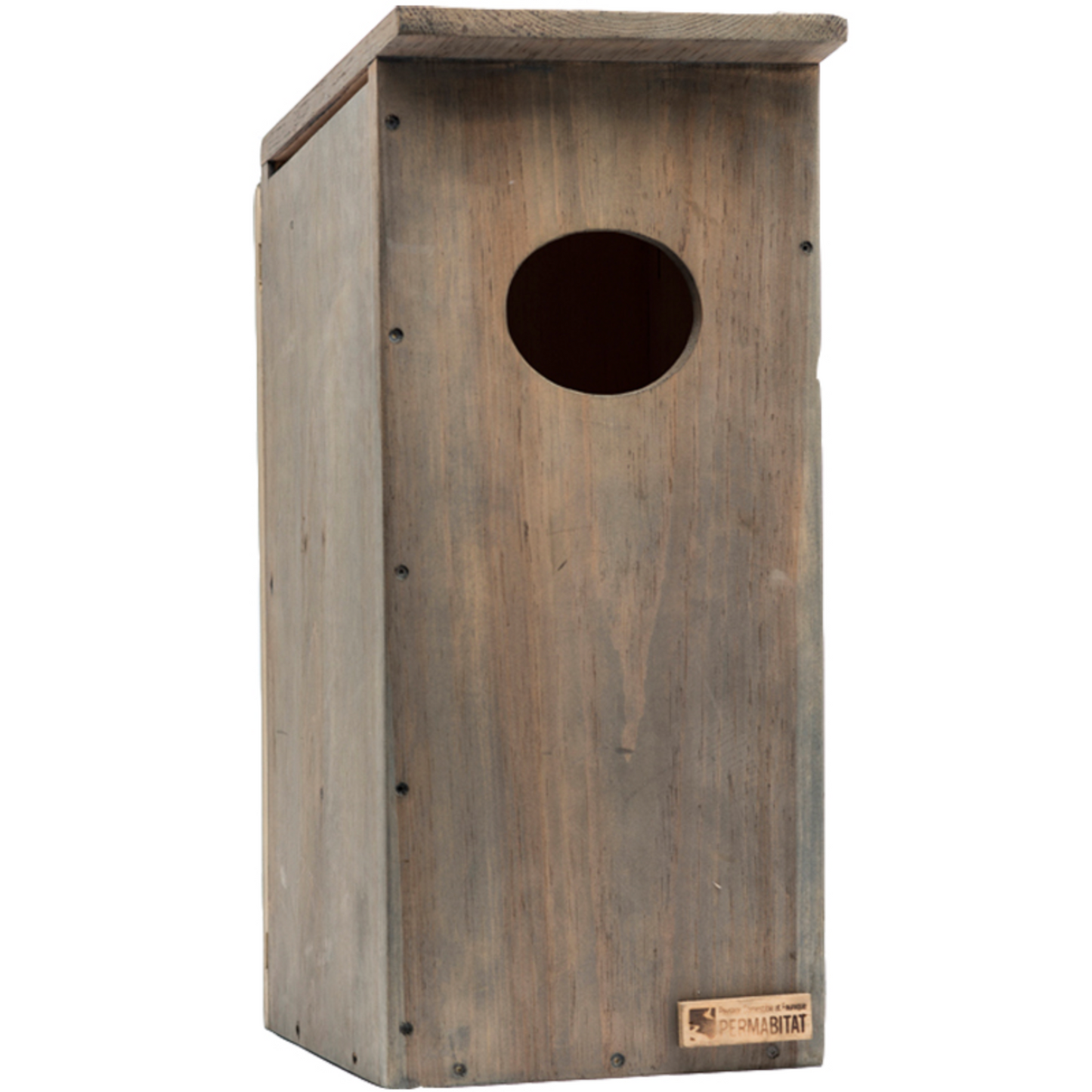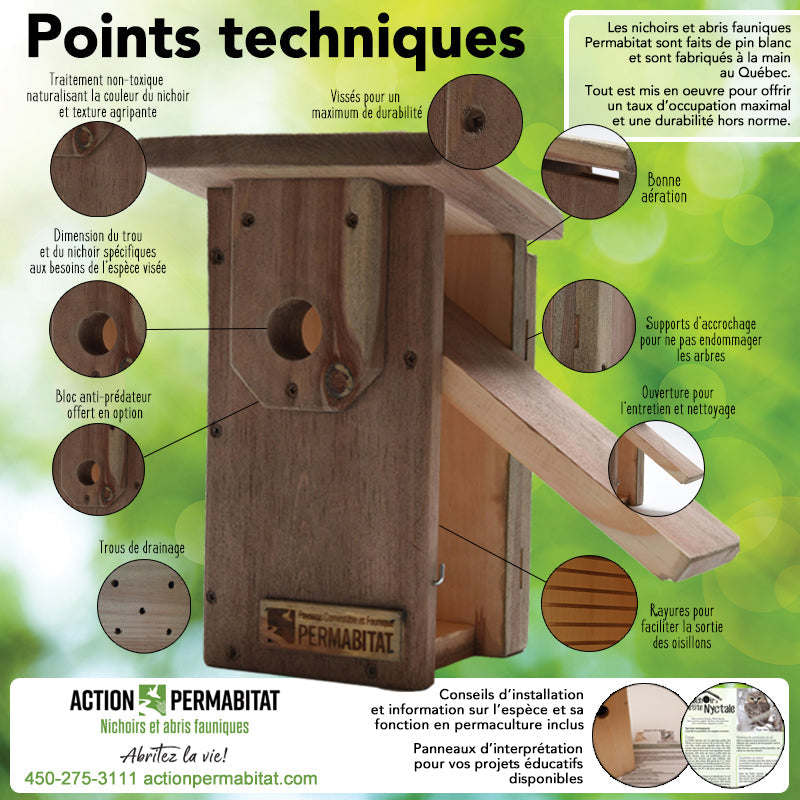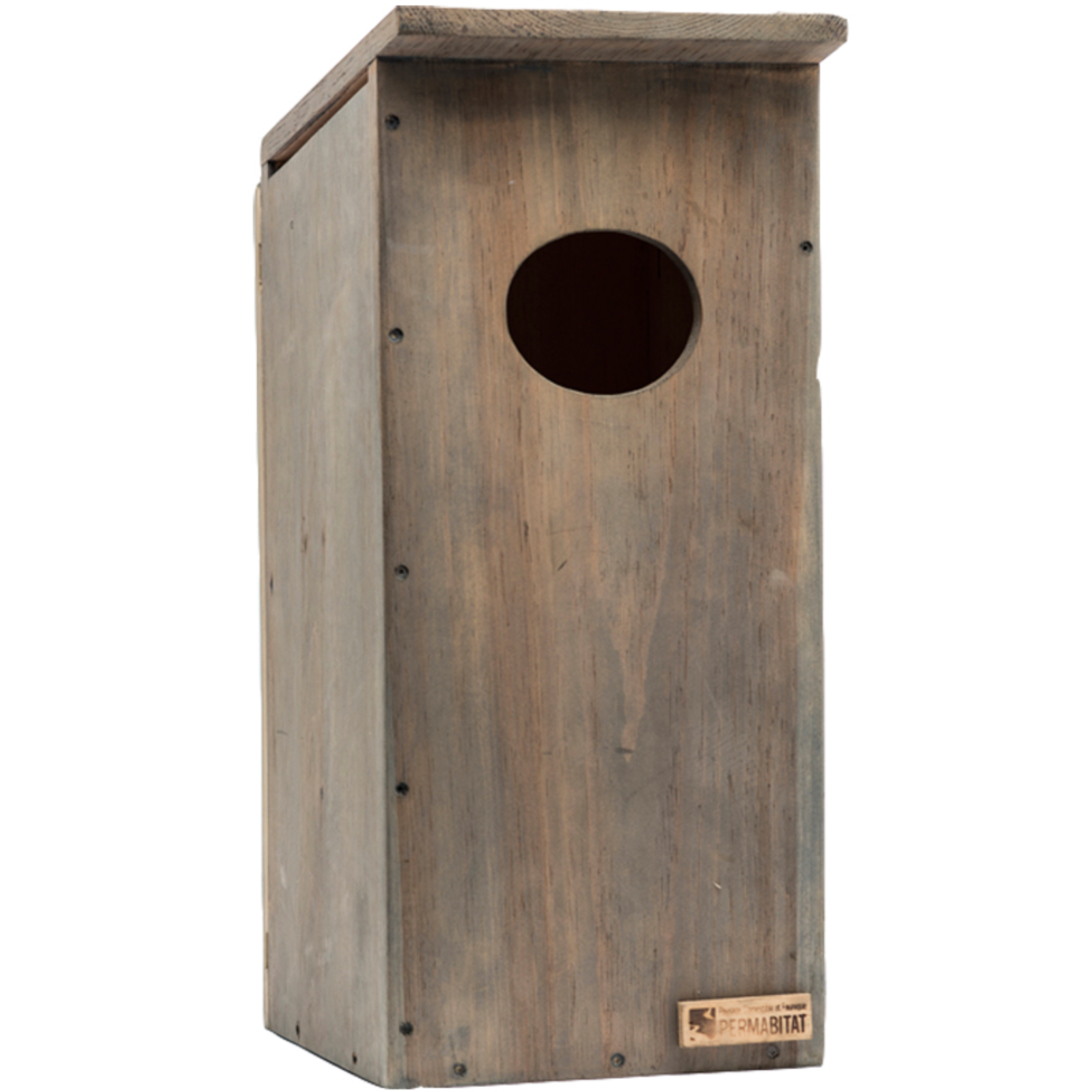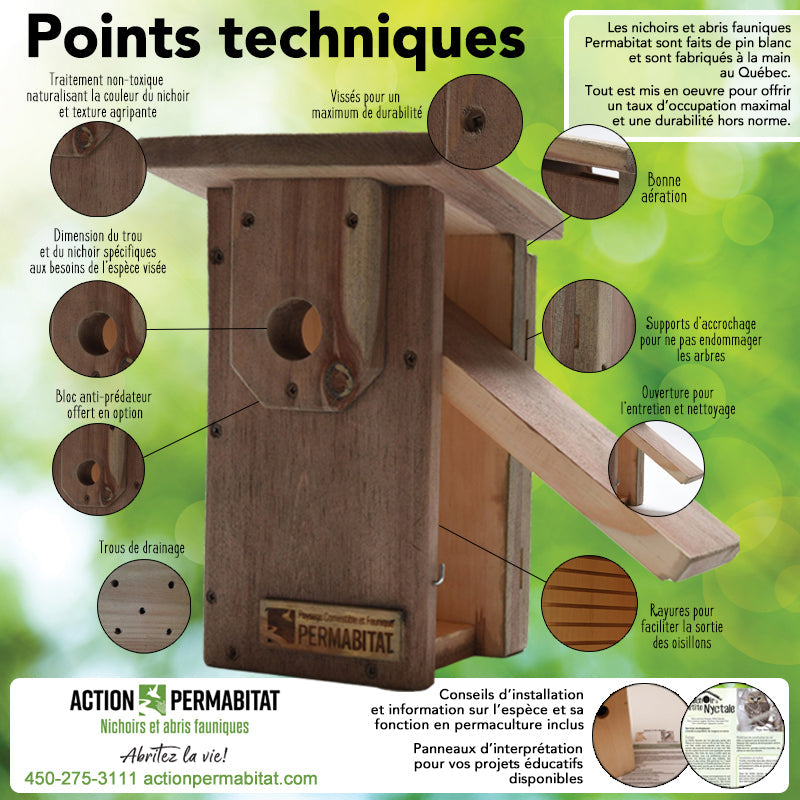1
/
of
3
Wood Duck Nest Box
Wood Duck Nest Box
Regular price
$89.99
Regular price
$89.99
Sale price
$89.99
Unit price
/
per
Shipping calculated at checkout.
Couldn't load pickup availability
WOOD DUCK
Aix sponsa
This duck is one of the only ducks that perches and nests in trees. It is also one of the most colorful. It occupies flooded forests, ponds and tree-lined rivers. The wood duck migrates south from October to November and returns in March. It nests from April to August and the female lays 12 eggs which she incubates for 27 to 37 days. The chicks will make their first flight approximately 56 to 70 days after hatching.
The Wood Duck is a bubbler and feeds by filtering plant particles from the water. Its diet is varied, including seeds, fruits, aquatic plants, insects and acorns. Unregulated hunting has made it rare and the loss of nesting sites pushes it to use old nests on the ground rather than cavities, which reduces hatching success. Installing a nest box in a suitable environment increases the chances of one day seeing a pair of wood ducks breeding there.
HABITAT
City, countryside, forest and body of water.
ECOLOGICAL SERVICES OF THE SPECIES
Contributes to maintaining the biodiversity of wetlands.
FACILITY
Slightly in the riverside strip.
Install on one of the largest trees available.
Remove branches in front of and around the nest box to avoid intrusions.
Avoid installing on birch and aspen trees.
Do not expose the entrance to the nest box to bad weather.
Place 4 to 6 inches of wood shavings in the bottom of the nest box.
Height at least 1.25 meters above water and 3 meters above dry land.
May be used by: Hooded Merganser, Yellow-eyed Goldeneye, Northern Saw-whet Owl, Eastern Screech Owl, Flying Squirrel (Polatouche).
Slightly in the riverside strip.
Install on one of the largest trees available.
Remove branches in front of and around the nest box to avoid intrusions.
Avoid installing on birch and aspen trees.
Do not expose the entrance to the nest box to bad weather.
Place 4 to 6 inches of wood shavings in the bottom of the nest box.
Height at least 1.25 meters above water and 3 meters above dry land.
May be used by: Hooded Merganser, Yellow-eyed Goldeneye, Northern Saw-whet Owl, Eastern Screech Owl, Flying Squirrel (Polatouche).
FAVORITE PLANTS AND VEGETATIONS
Its diet is varied, seeds, fruits, aquatic plants, insects and acorns.
PRECAUTIONS
_ Carry out maintenance every fall to avoid pests and diseases
_ Do not drive screws or drive nails directly into trees.






